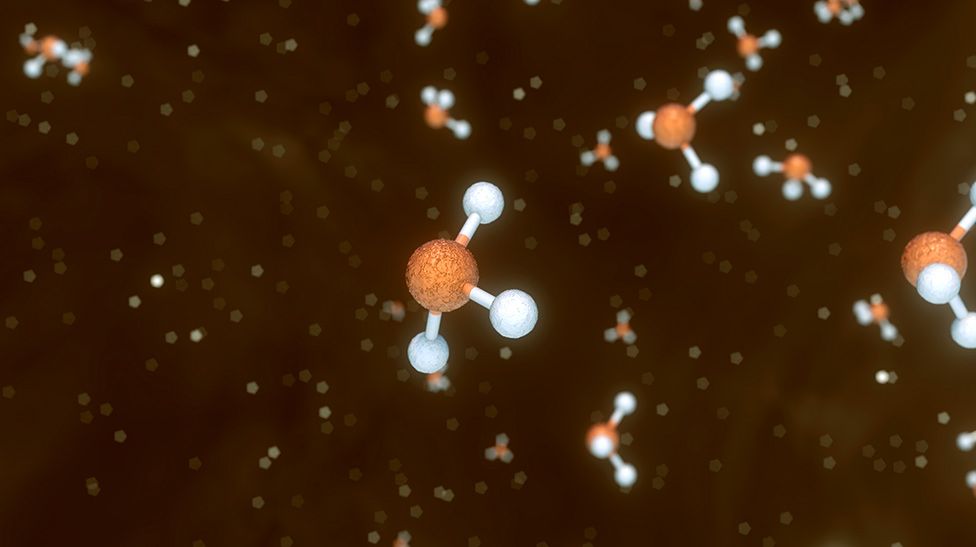
Exobiology.Space
EXOBIOLOGY.SPACE
Exobiology is the portion of astrobiology that focuses solely upon extraterrestrial life.
Chemical Signatures
Indications of the possible presence of life on other planets can sometimes be detected by certain chemicals in their atmospheres. The chemistry of life depends on the presence of various chemical substrates which we may be able to detect from afar. Also, extraterrestrial life produces byproducts indicative of their presence that we might likewise be able to detect. A prime example of this phenomenom is the recently discovered presence of phosphine in the Venusian cloud banks.
Biogenic minerals are minerals essential to life as we know it, and therefore associated with life and its processes. A collection of biogenic minerals can be evidence of past life in that location. We can search for collections of biogenic minerals in ur search for current or past life in a given location.
https://www.science.org/doi/10.1126/science.1095177

PHOSPHINE
Indications of the possible presence of the toxic gas phosphine (PH3) have recently been detected in the clouds of Venus. This gas is known on Earth as a byproduct of the metabolic processes of microorganisms. It is emitted as a waste product of certain living organisms. Although there are natural sources of phosphine other than from microorganisms, the gas is so indicative of the presence of life that it is one of those that have been hypothesized as a kind of "biomarker of extraterrestrial life" that we may look for as we scout distant planets for indications of life.
In addition ot phosphine, ammonia has also been detected. The possible presence of both of these "gases of life" points even more directly to the potential current presence of life in the atmosphere of planet Venus.
https://www.theguardian.com/science/article/2024/jul/17/signs-of-two-gases-phosphine-ammonia-in-clouds-of-venus-life
The probable presence of phosphine gas in the air of planet Venus prompts us to search the clouds of Venus for potential microbial life which may be the source of the noxious gas. Extremophiles on Earth are found in environments similar to that of the atmosphere of Venus. We might well find Venusian microorganisms lurking in Venus' lower clouds if we are to seriously search for them there.


Venus Life Finder Mission
A distinguished team of scientists at the Massachusetts Institute of Technology propose a mission to further elucidate the chemistry within the upper clouds of planet Venus. Their website "The Search for Life in Venus' Clouds" https://venuscloudlife.com/venus-life-finder-mission-study/ describes the particulars of the Venus Life Finder Mission. Conifirnming the presence of phosphine in the air of Venus is one of their goals.
Using floating aerostats, gondolas, balloons, return samples to Earth rockets, and other mechanisms deployed to the atmoshphere of Venus, the MIT project seeks to finally tell us if life exists at planet Venus. The data acquired will also tell us much more about the general habitability of various layers in the atmosphere of Venus. The MIT team has published a detailed description of the particulars of their proposal https://venuscloudlife.com/wp-content/uploads/2021/12/VLFReport_12092021.pdf complete with helpful illustrations. The concepts presented derive from an eighteen month world-wide consortium led by MIT. The consortium concluded that to find extraterrestrial life would be one of the greatest discoveries in science to date, and that the atmosphere of Venus is worthy of search.
The proposed Venus LIfe Finder Missions consist of three atmospheric probes. The goals of the missions are to 1) determine the habitability of the Venusian atmoshpere, 2) seek out indirect indications of life, and 3) search for the presence of life itself.
The first of these, determination of the habitability of the Venusian atmosphere, is perhaps the most relevant currently, since planners are deciding where to direct resources for the first human colonization of other celestial bodies. Those who wish to #colonizeVenus recognize that the upper atmosphere of plant Venus may be the most habitable place in the solar system beyond Earth.

